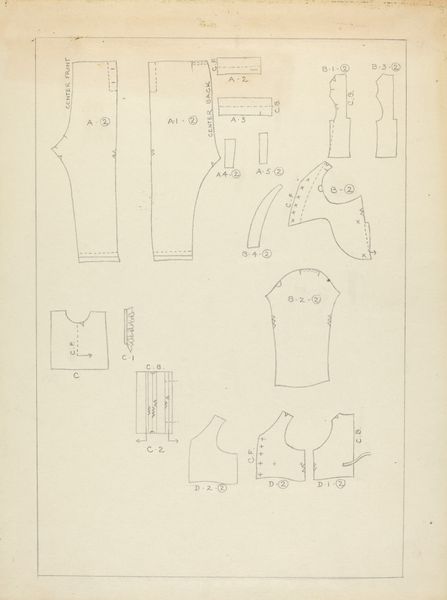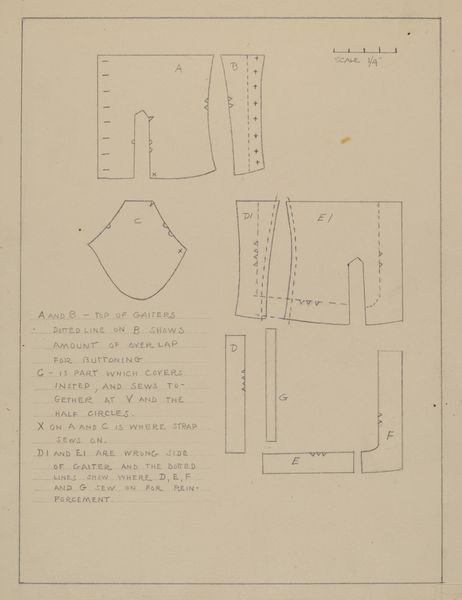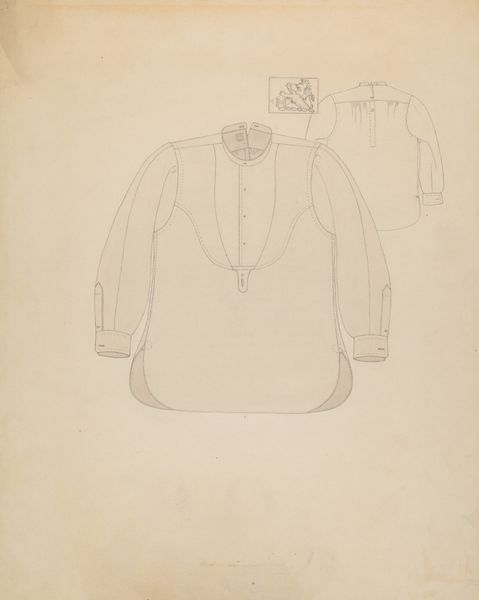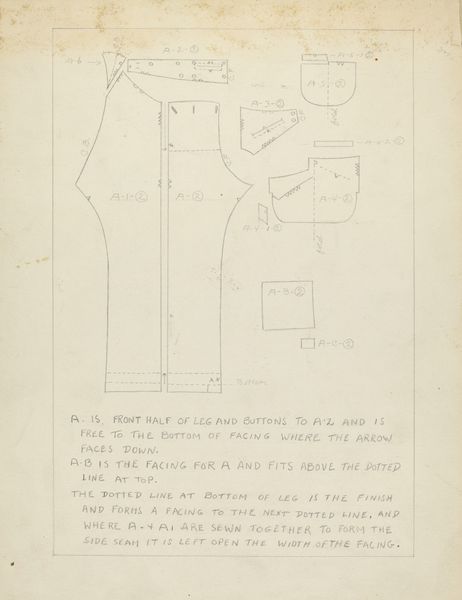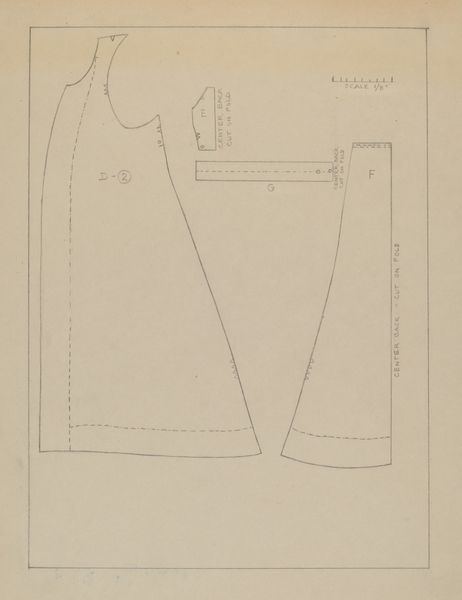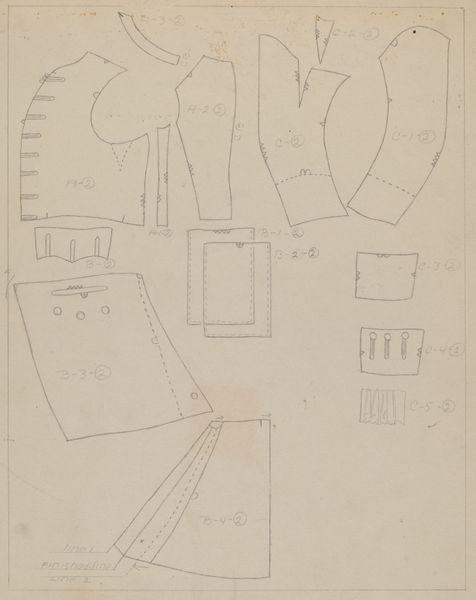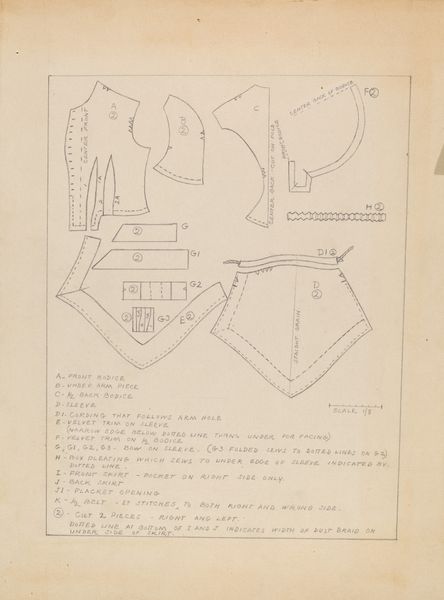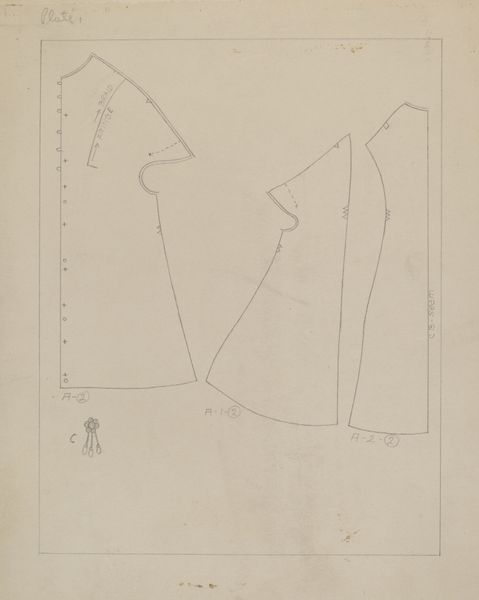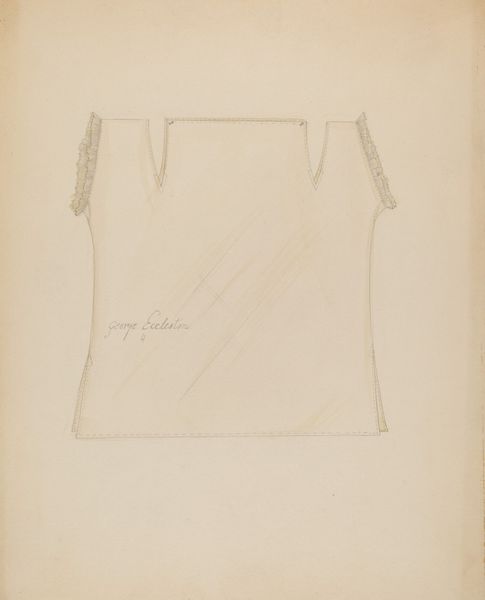
drawing, paper, pencil
#
drawing
#
paper
#
geometric
#
pencil
#
modernism
Dimensions: overall: 30 x 22.9 cm (11 13/16 x 9 in.)
Copyright: National Gallery of Art: CC0 1.0
Curator: Ah, this pencil drawing, entitled "Sugar Merchant's Suit (Pattern)," created by Henry De Wolfe sometime between 1935 and 1942, really stands out. Editor: My immediate reaction is one of intriguing quietude. The lines are so delicate; it’s almost like viewing an architectural blueprint, but for clothing. It feels… purposeful but understated. Curator: It is interesting how De Wolfe presents these suit pattern pieces. It resembles not just design but also speaks to an almost alchemical transformation: a raw material turned into refined adornment. Sugar—symbolic of wealth, luxury—paired with a merchant’s tailored suit signifies status, power, and perhaps even global exchange. Editor: And let’s think about what this actually represents. These aren’t just abstract lines. This is about labour, production, and the construction of identity. De Wolfe's meticulous depiction of patterns gives importance to craft, to process itself, pushing against the grain of "high" art versus "applied" art. One wonders where, when, and by whom the garments would have been assembled. Curator: Indeed! The symbolism could also allude to larger societal structures, where sugar represents both desire and potentially the bitter history of exploitation involved in its production. Editor: Precisely. Furthermore, considering it’s pencil on paper, we also engage with an unvarnished record of thought; the artist making visible what is so often hidden – the construction phase prior to consumption, the physical marks required for sartorial invention and realization. Curator: Right. Those are the crucial connections to history and social context I seek. What stories do these images have to tell? And how do they keep being retold through the passage of time? Editor: I am left contemplating all the labour involved in this image, too -the sugar trade, the suit design and finally De Wolfe’s steady hand capturing all those layers for posterity! Curator: Absolutely, contemplating De Wolfe’s artwork, for me, underscores how images continue to evolve within collective consciousness. Editor: And from my point of view, prompts a deeper investigation of production processes to reveal wider socio-economic truths.
Comments
No comments
Be the first to comment and join the conversation on the ultimate creative platform.
